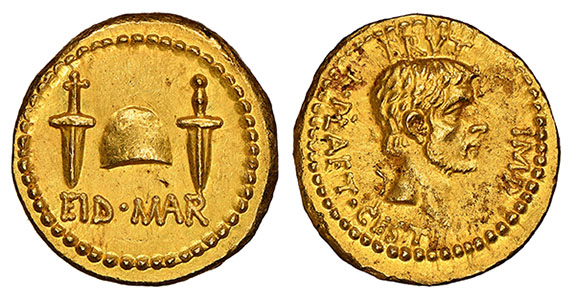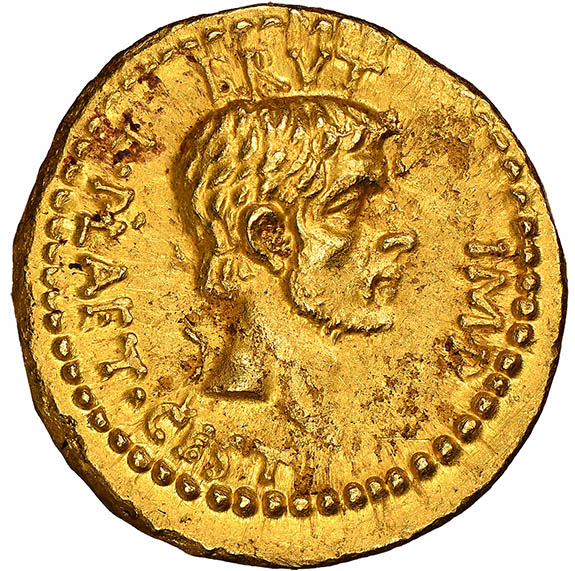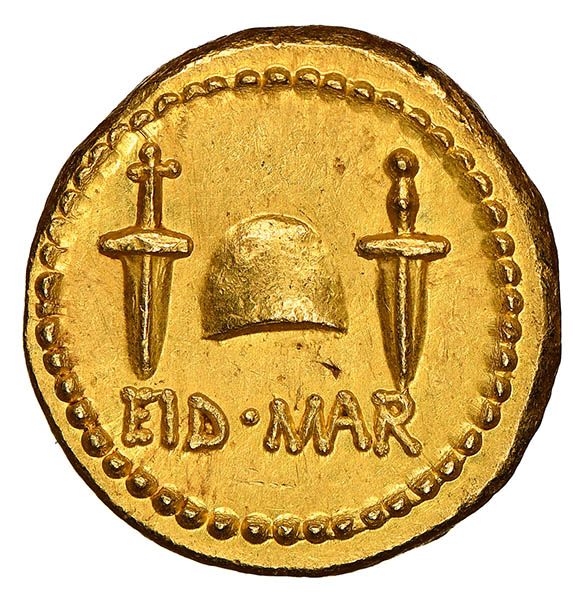An ultra-rare “Ides of March” gold coin that darkly commemorated the assassination of Roman dictator Julius Caesar in 44 BC — and broke an auction record in 2020 when it fetched $4.2 million — has been returned to Greece by New York authorities.
The Manhattan District Attorney's office confiscated the ill-gotten coin from an unnamed US billionaire, who bought it in good faith, but the coin should have never been offered at auction. Greece's Antiquities Law states that ancient works, including coins, are the property of the state.
Greek officials reclaimed the coin last Tuesday during an official ceremony at the country's consulate in New York City.
This previously unrecorded coin — one of only three known to exist — was reportedly closely held in a private European collection. But New York authorities claim that it has been looted from a field near where, more than 2,000 years ago, an army loyal to Caesar's assassins camped during the struggle for control of Rome. Experts told The New York Times that the coin was likely found about a decade ago, but not reported to Greek authorities as required by law.
Back in 2020, numismatic expert Mark Salzberg, chairman of the Sarasota, FL-based Numismatic Guaranty Corporation, said he anticipated the coin's strong performance at auction.
“I’m not surprised it set a world record as the most valuable ancient coin ever sold,” said Salzberg at the time. “It’s a masterpiece of artistry and rarity, still in mint condition after 2,000 years, and only the third known example made in gold. Many of us believed it would sell for millions, and it did.”
The front of the coin features a portrait of Marcus Junius Brutus, one of Caesar’s assassins, and the other side dramatically depicts two daggers and the marking “EID MAR.” The initials represent the Latin abbreviation for the Ides of March, which corresponds to March 15 on the calendar and is the date Caesar was assassinated.
Between the two daggers is a “pileus” — a cap of liberty traditionally given to Roman slaves when they were freed. The cap’s image was a symbolic statement that Rome was liberated after the assassination of the tyrant dictator.
“It was made in 42 BC, two years after the famous assassination, and is one of the most important and valuable coins of the ancient world,” explained Salzberg in 2020.
While nearly 100 Ides of March silver coins are known to still exist, this is only the third example known to be struck in gold. Of the other two, one is in the British Museum on loan from a private collector and the other is in the Deutsche Bundesbank collection.
The gold coin was one of 29 Hellenic antiquities returned to Greece during the ceremony. Some dated back to 5,000 BC and included figurines, vessels and jewelry. They had a combined estimated value of about $20 million.
Credits: Images courtesy of Numismatic Guaranty Corporation.



